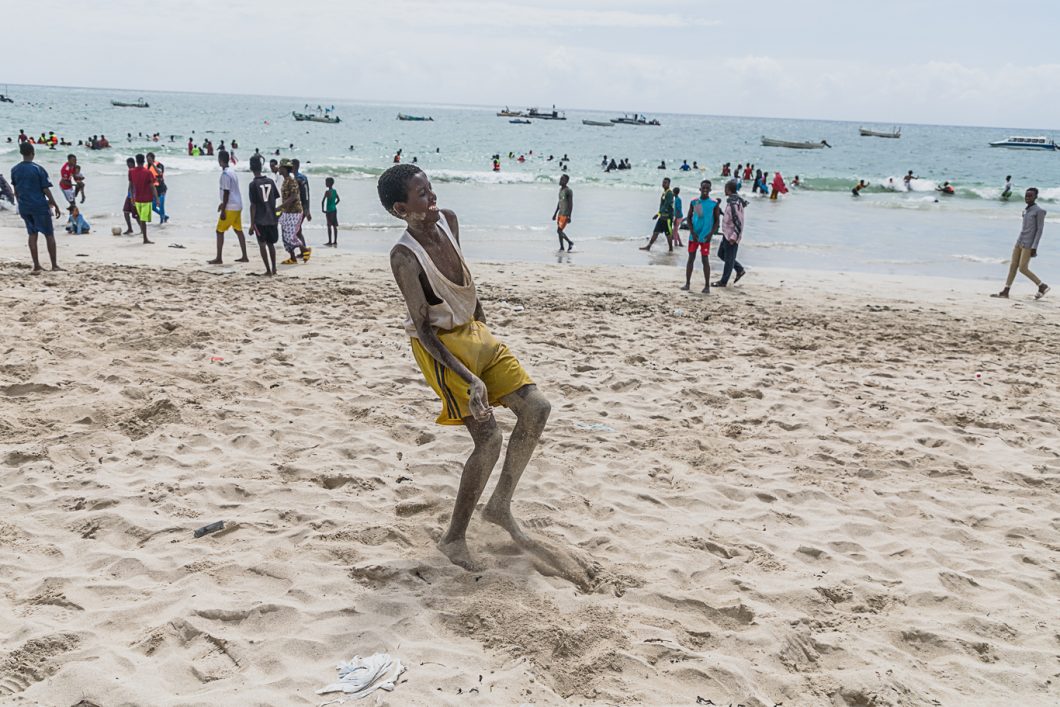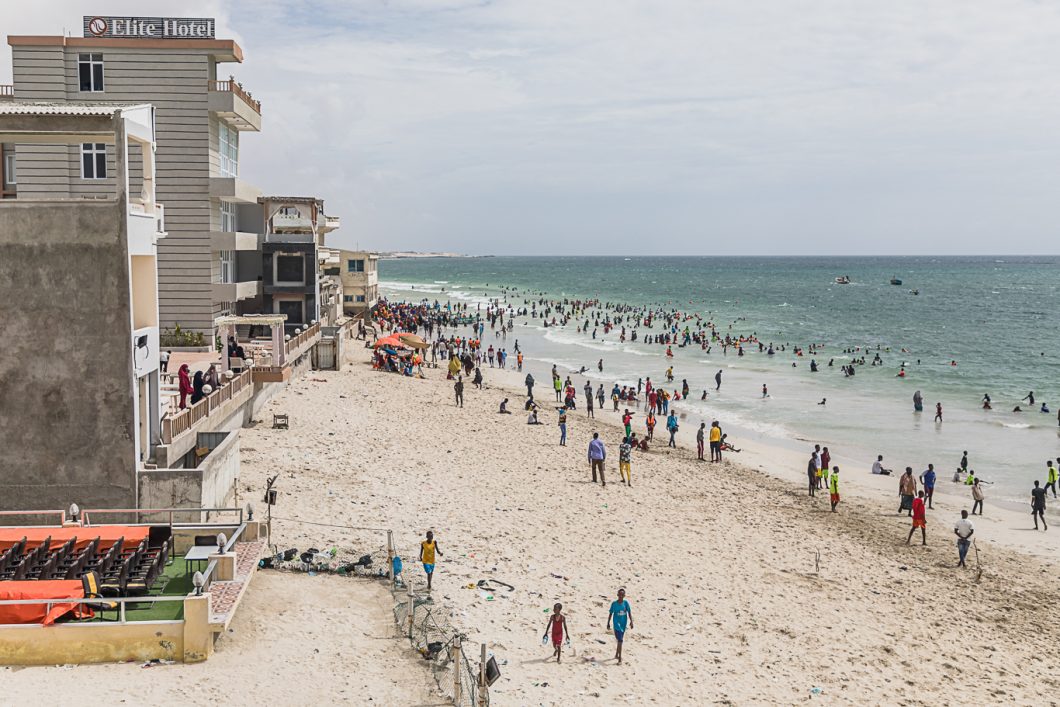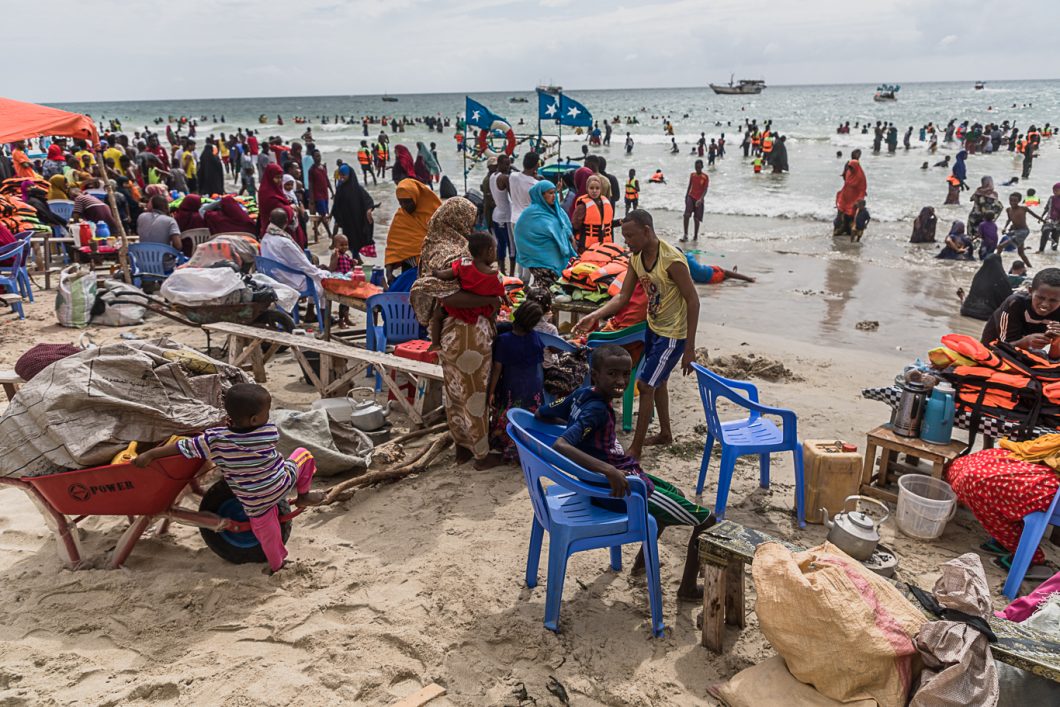On the first day of 2020, I travelled with writer Abdi Latif to Mogadishu, Somalia, for the New York Times, to follow up on a story about a bombing in the city that killed 82 people and injured over 150.
That was my first time in Somalia. It was a country I was curious about. I had heard a lot about Mogadishu, and I was looking forward to finding answers to the questions I had in mind.
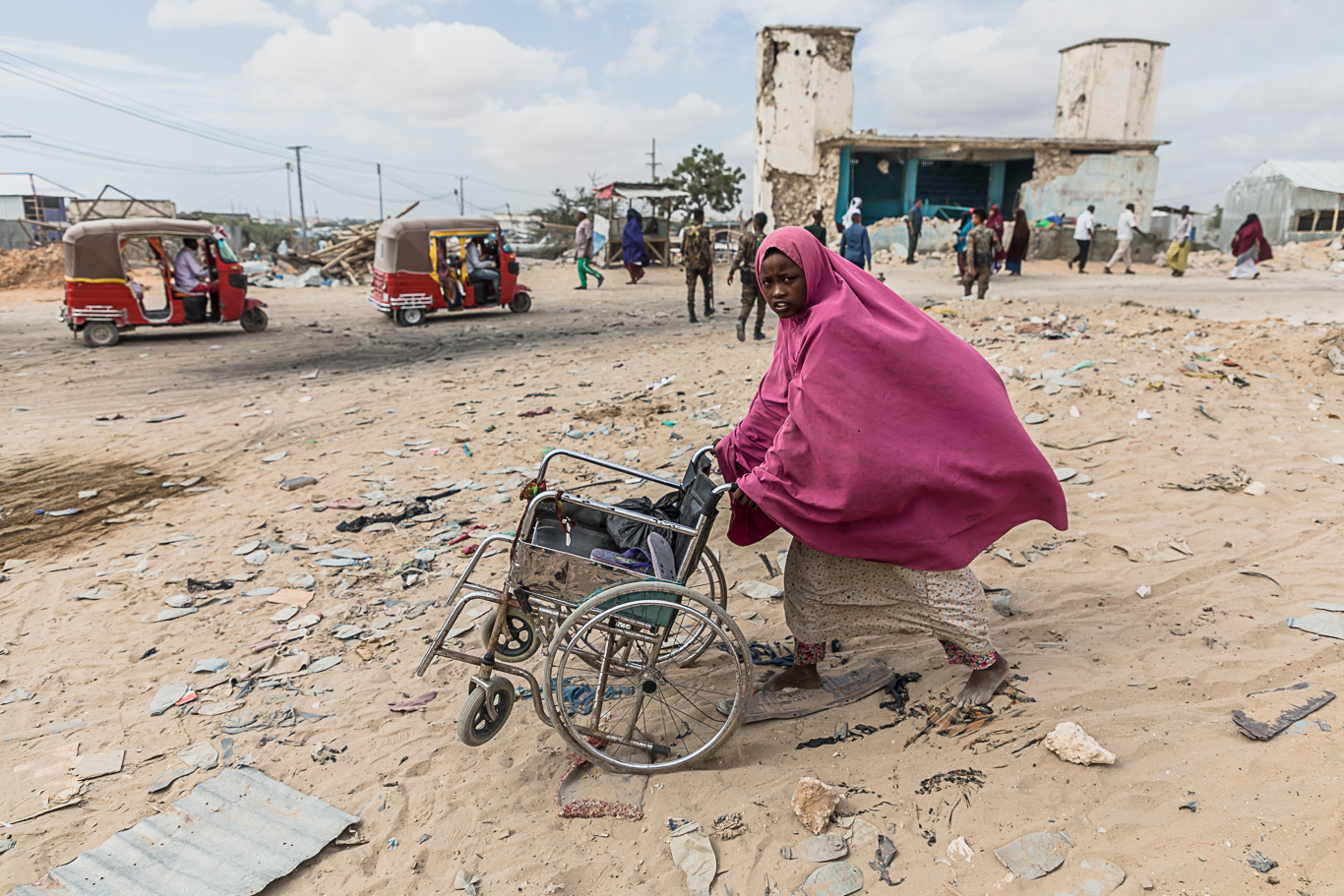
Mogadishu looked very rough. At every street corner – police officers and soldiers carrying guns. The streets were full of sand-filled green sacks – meant to act as a bulletproof shield in case of an attack. It looked like a scene of war with roadblocks everywhere—Tuk-tuks, motorbikes, and cars on the busy streets.
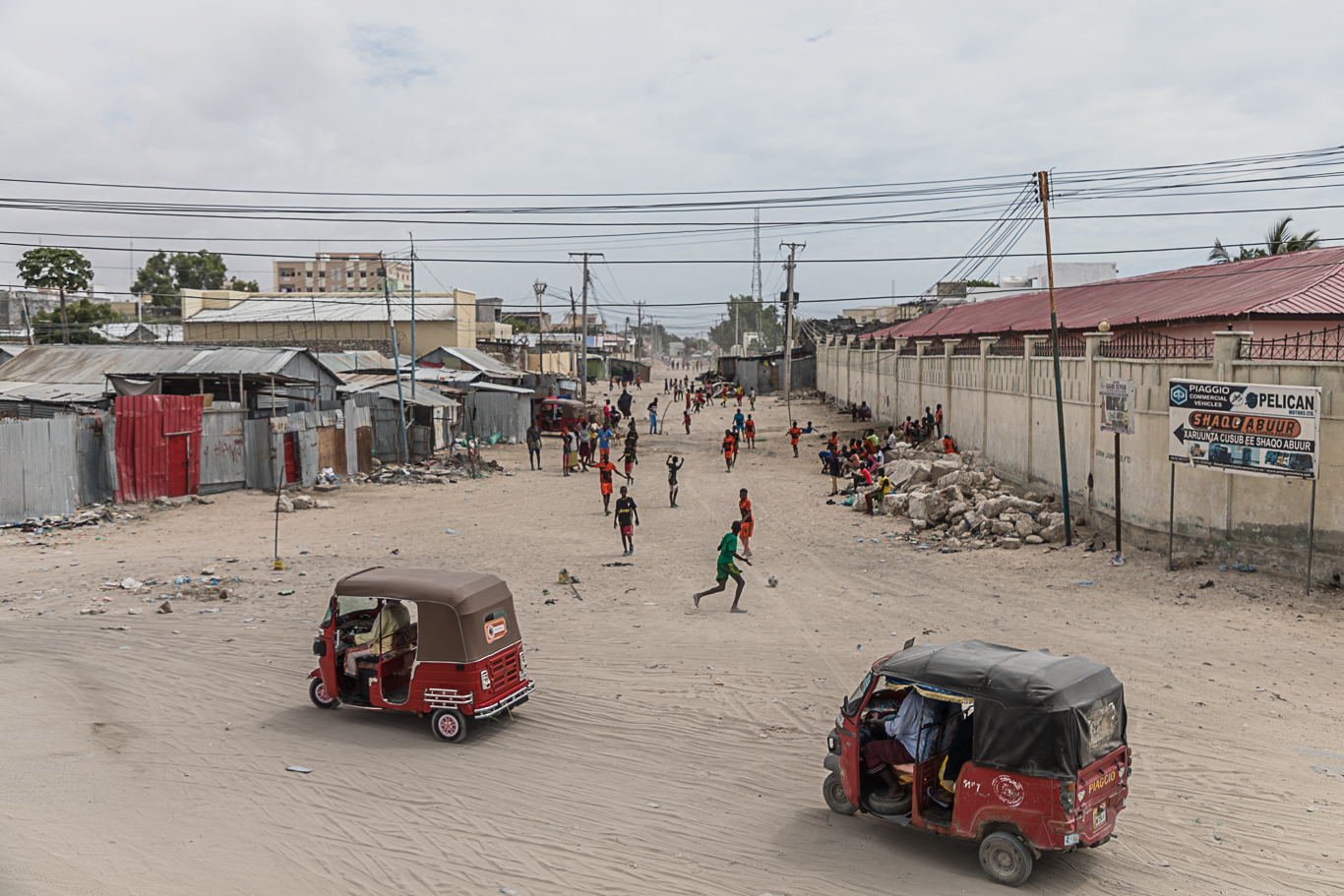
Many buildings were destroyed, and many were under construction or being renovated. There were a lot of apartment complexes – similar to those we see here in Kileleshwa, Nairobi. They were gated, with tight security. This is where some of Mogadishu’s affluent lived. We had access to the rooftop in one of them, where I took some photos of the neighbourhood from above.

Mogadishu looked like an interestingly weird place to live. We interviewed families of the victims who perished in the bomb attack. We listened to their stories and their children’s hopes. It was sad.
To see the other side of Mogadishu we went to Lido beach – this is where the city lives and parties. Every Friday, hundreds flock to the beach – women in their burqas learning to swim; shirtless men flexing muscles, playing sand games, taking photos. Lots of merch on sale. Lido beach was an epitome of life. It made me question my first impressions of Mogadishu. There were several hotels, bullet-ridden walls just there at the beach – a sign of the war that the city has battled for over a decade. On our way to the beach, the streets were empty. It made me feel that you can’t walk the streets alone – there were roadblocks – many of them. And everyone seems to be suspicious of everyone. And still, the beach, full of life.
We heard the news of a new coffee house in town. We went there one evening, and I was shocked. It felt like I was just in Nairobi, at ArtCafe or Java – this was a part of Mogadishu that wasn’t obvious at all. Beyden’s. I walked in there with my camera, and my presence became visible. Someone called me, from within the crowd at Beyden’s: ‘Hey, KiberaStories?‘. ‘Yes, that’s me‘, I answered. ‘I am your biggest fan‘, he said. That was Abdi Fatah – a young Somalian behind the Instagram page’ Somali Faces’, which is almost similar to Humans of New York, but most dedicated to reconstructing Somalia’s image. He was there, with a MacBook, browsing the Internet. We talked briefly and scheduled for a meeting the next day after introducing me to his bunch of friends – who were also young Somalis, creatives, artists and working hard to change the narrative of Mogadishu.
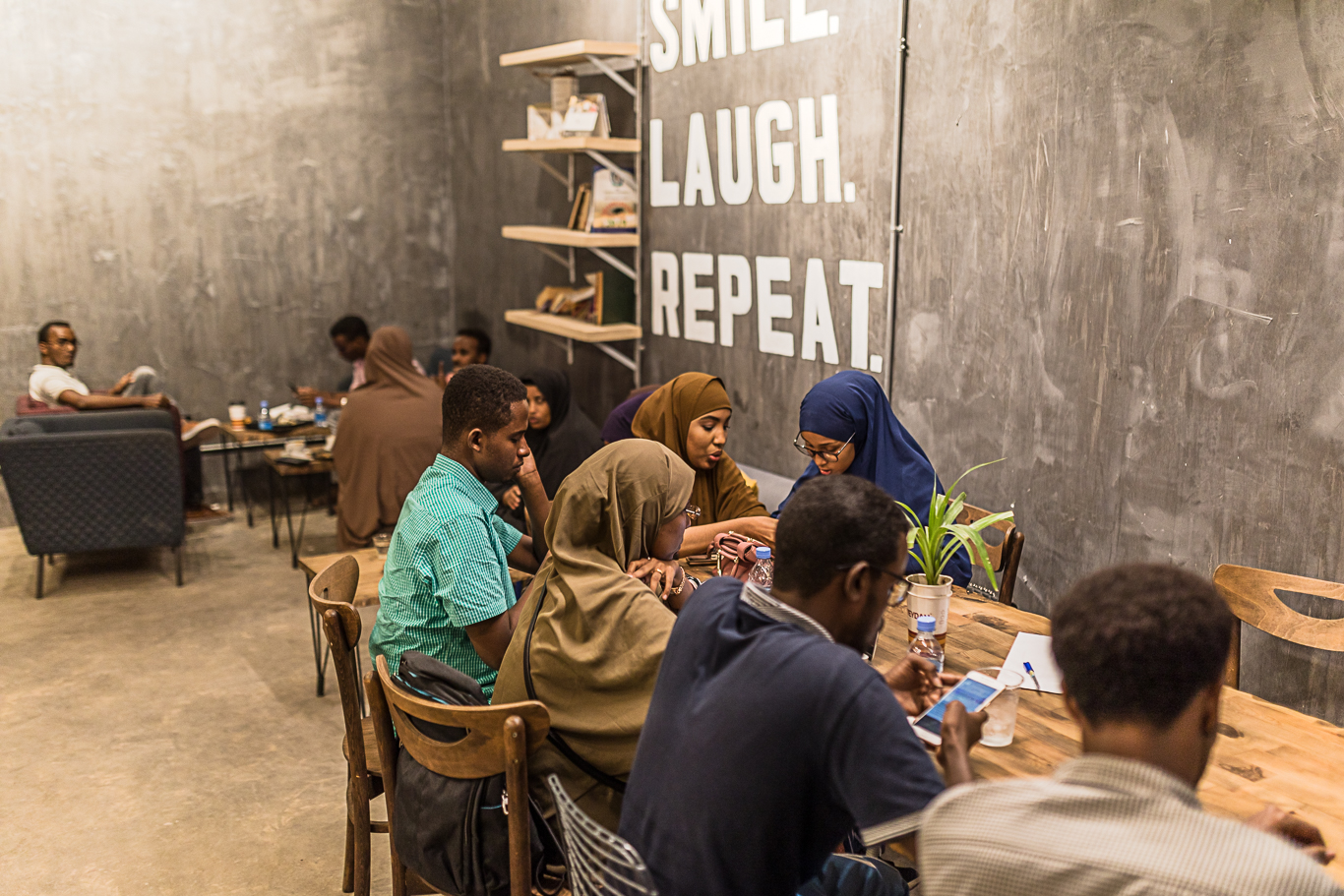
The next day I met Abdi Fatah at a safe neighbourhood where I stayed – a five-minute drive to the airport. We spent the rest of the evening talking and sharing ideas on our creative visions – his Somali Faces and my KiberaStories. We talked about many things: family, photography, and art while munching rice with vegetables and raisins, and bananas on the side. Abdi left for the night before it was too late.
Mogadishu is unpredictable. Anything can happen any time, and life moves on. I remember being at the site of the explosion. It was business as usual. Still, at the back of my mind, it all smelt like death. I couldn’t think that a few days ago, over 80 people had died there, gone forever, and many others were nursing severe injuries.
While I’ve heard a lot about Mogadishu and its battle with the extremist al-Shabaab group, I was amazed at how the city and its young were rising. Somalis from the diaspora coming home to build the city and the country from the ground. The Internet was fast – I never complained, and while relaxing on my bed, I streamed Netflix seamlessly without a buffer. My comfort would soon be disrupted by the sound of gunshots, every other evening. It was incessant and would last for long. I asked what was happening and the response was: ‘Most probably they are testing some new equipment‘. I asked myself how you can raise a child in this environment – of gunshots and blasts every other evening. But for an ordinary Mogadishuan, my thoughts were a non-issue. This was daily life, and a peaceful and quiet evening was one that made you wonder what’s wrong.
